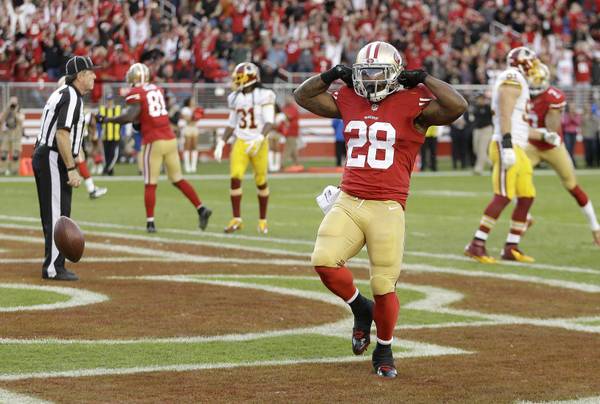Football Betting Plus Minus

The favorite in a matchup, indicated by a minus (-) sign, will have a given number of points taken away from its final score, while the underdog, known by its plus (+) sign, will have the same number of points added to its final score. Plus−minus (+/−, ±, plus/minus) is a sports statistic used to measure a player's impact on the game, represented by the difference between their team's total scoring versus their opponent's when the player is in the game. In ice hockey, it measures a player's goal differential.When an even-strength goal or shorthanded goal is scored, the plus–minus statistic is increased by one ('plus.
The favorite, which is the side with the minus number as the point spread, must win by more than the point spread dictates. The underdog, which is the plus number as the point spread, cannot lose by more than the point spread dictates. Are ties allowed? Yes, ties can happen when point spread betting. If the point spread is an even number and the difference in the competition’s result falls directly on that. It takes the form of plus/minus sign followed by numbers. An example of point spread is 'New England Patriots -7'. The '-7' is the point spread. It simply means that if you bet the point spread on the Pats, New England must win the game by more than seven points in order for your bet to be a winner. When you bet on the favorite you get worse payout odds on your bet since they’re more likely to win. The team with a negative number (like -110) is the favorite. The number next to the minus sign is the amount you must bet to win $100 in profit. If the number is -110, you must bet $110 to win $100. Odds with a Plus Sign (Underdog).
As a fan, you don’t care if your team wins by a point or 100. A win is a win, though that 100-point win would be a little easier on the nerves.

In sports betting, how much a team wins by is usually all that matters.
Football Betting Plus Minus
The most popular way to bet for the two most popular sports, basketball and football, is with the point spread, also known as the “side.” Most baseball, hockey and soccer bets are on the moneyline, which is betting on a team to win straight up with adjusted odds. Football and basketball have moneyline bets available too, but most people will take the point spread.
The concept can be a bit confusing if you’ve never dabbled in sports betting before.

Why bet with the point spread?
The point spread was created to attract more action on a game. When the San Francisco 49ers are expected to blow out the Arizona Cardinals, it’s not enticing to lay $300 to win $100 on a moneyline. But when the 49ers are 11-point favorites and each side is -110 odds? That’s much easier.
In that example, the 49ers are spotting the Cardinals 11 points before the game starts, at least for bettors. The 49ers have to win by 12 or more points to cover the spread. If the Cardinals win or lose by 10 or less, that side wins the bet. If the game lands on 11, like a 21-10 49ers win, it’s a push and all bets are refunded. If you see a -11 that means that team is favored, and +11 means you’re taking the underdog.
Nothing sharpens your math skills better than trying to figure out how big your lead as a bettor is if you have a 22.5-point basketball underdog that is losing 90-72.
The problem with the point spread can be when a team — which really doesn’t care that you bet the favorite at -11 — has a 14-point lead but gives up a meaningless score at the end to win by only seven points. They’re still happy with the win. You, as a bettor, are not.
© Provided by Yahoo! Sports Sportsbooks have large boards that display point spreads for all games that day. (AP Photo/John Locher, File)Plus 100 Betting

Point spreads lead to bad beats
The most infamous example of a bad beat with the point spread probably came in the 2004 Final Four at the NCAA men’s basketball tournament.
Duke was a 2.5-point underdog against UConn. The Huskies rallied late and took a 79-75 lead on a free throw with 3.2 seconds left. The game itself was over; Duke couldn’t score twice in a few seconds. But Duke guard Chris Duhon pulled up for a running 3-pointer just over the half-court line and banked it in at the buzzer. Duke lost 79-78, but bettors who had Duke and 2.5 points won. March Madness is a huge event for bettors, and reports at the time estimated that Duhon’s “meaningless” shot resulted in a $30 or $40 million swing in Nevada. UConn players celebrated at the final buzzer. UConn bettors doubled over in pain. That’s the difference between betting the moneyline and the point spread.
Plus Minus In Football Betting
Baseball and hockey have point spreads too, the “run line” in baseball and “puck line” in hockey. It’s generally 1.5 with odds adjusting accordingly. Taking a big baseball favorite at -1.5 runs can make the odds more palatable. Of course, betting the New York Yankees at -1.5 to bring down the odds from -190 to -110 isn’t too fun when they win 4-3 and you don’t cash a bet.
Betting on the point spread is the most common way to wager on sports. And the first time you take a favorite that wins the game but doesn’t cover the spread, you’ll understand every bettor’s heartbreak.